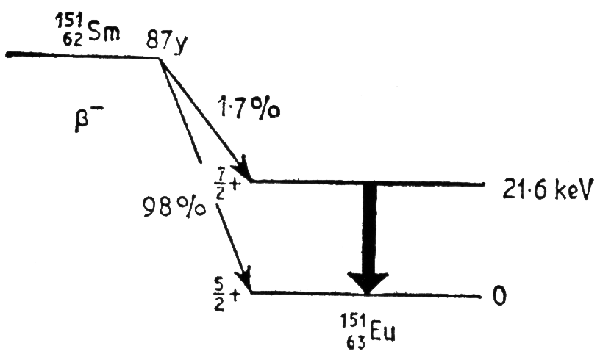 |
151Eu Mössbauer uses the 21.6 keV level which
is populated by the decay of 87 year 151Sm. Unfortunately,
less than 2% of the parent decays lead to a daughter in the 21.6 keV
level, and subsequent decays from this state suffer from severe internal
conversion so that less than 1% lead to the emission of a gamma photon.
Large source activities are essential (typically >100 mCi) and even then,
quite low counting rates are obtained.
|
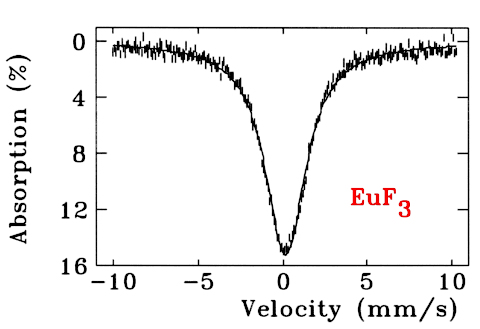 |
A typical paramagnetic 151Eu Mössbauer spectrum
of a Eu3+ compound (EuF3) obtained at room
temperature showing a linewidth (HWHM) of 1.46(2) mm/s and zero isomer
shift as the source is 151SmF3.
|
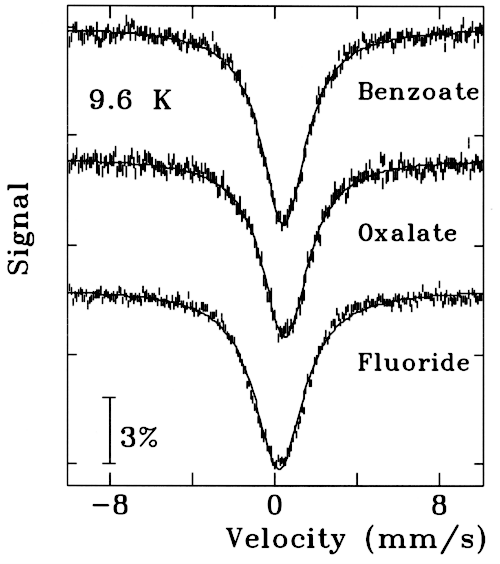 |
151Eu Mössbauer spectra of several trivalent
Europium compounds at 9.6K. As with the fluoride, the isomer
shifts are all close to zero. Quadrupole splittings in both
Eu3+ and Eu2+ compounds are generally
quite small and poorly resolved.
|
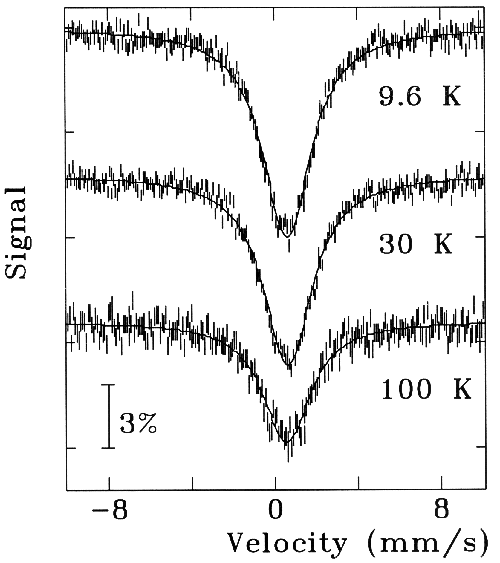 |
Increasing temperature leads to a marked decrease in spectral
area for this Europium-salen complex as the lattice is quite
soft and the 21.6 keV gamma leads to significant recoil losses.
|
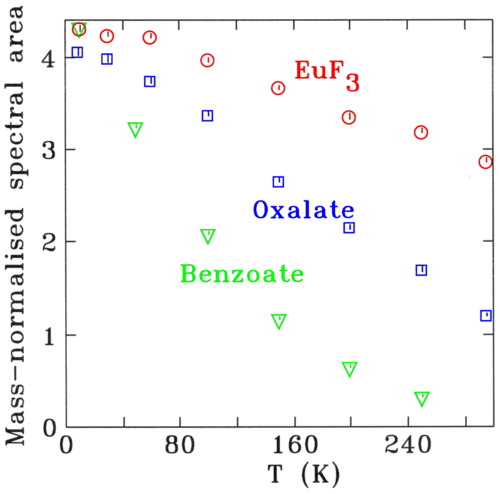 |
The effects of progressively softer chemical bonding on the
temperature dependence of the Mössbauer spectral area
is illustrated here with the benzoate being much more weakly
bonded than the fluoride.
|
 |
The presence of a magnetic hyperfine field splits both the
mI=7/2 excited state and the
mI=5/2 ground state. There are 18 allowed
transitions with substantial ovelap in line positions.
The pattern of the garnet shown here is further complicated
by the Eu atoms being equally divided between two crystallographically
distinct sites in the structure, each with a different hyperfine field
(34.6(1) T and 29.8(1) T).
|





